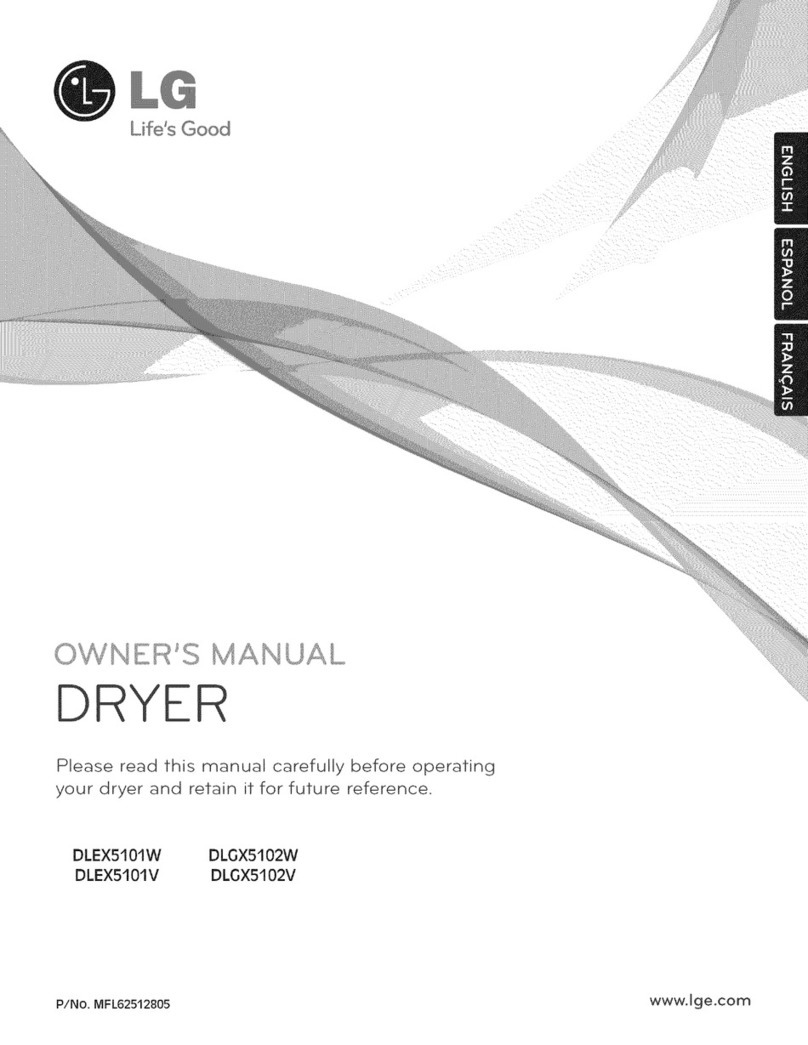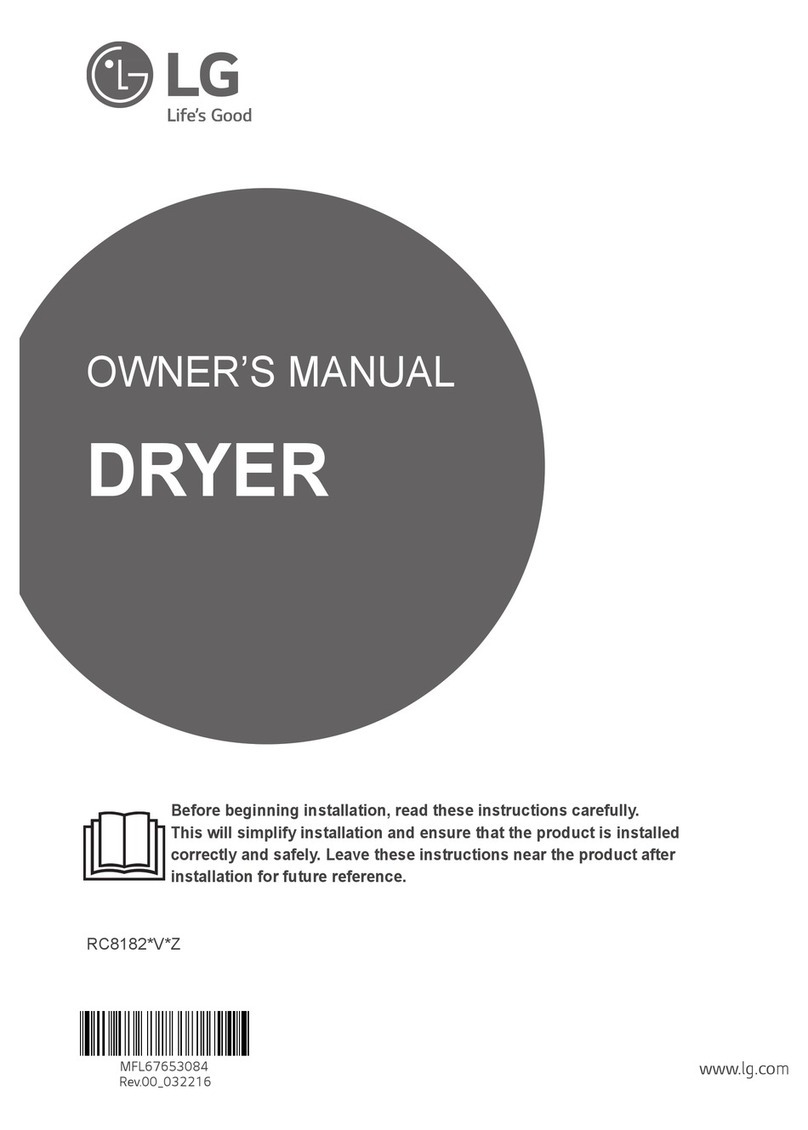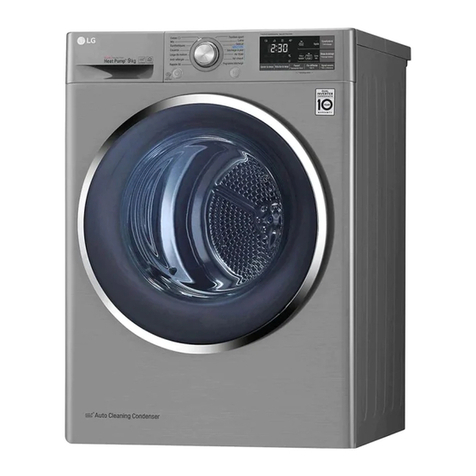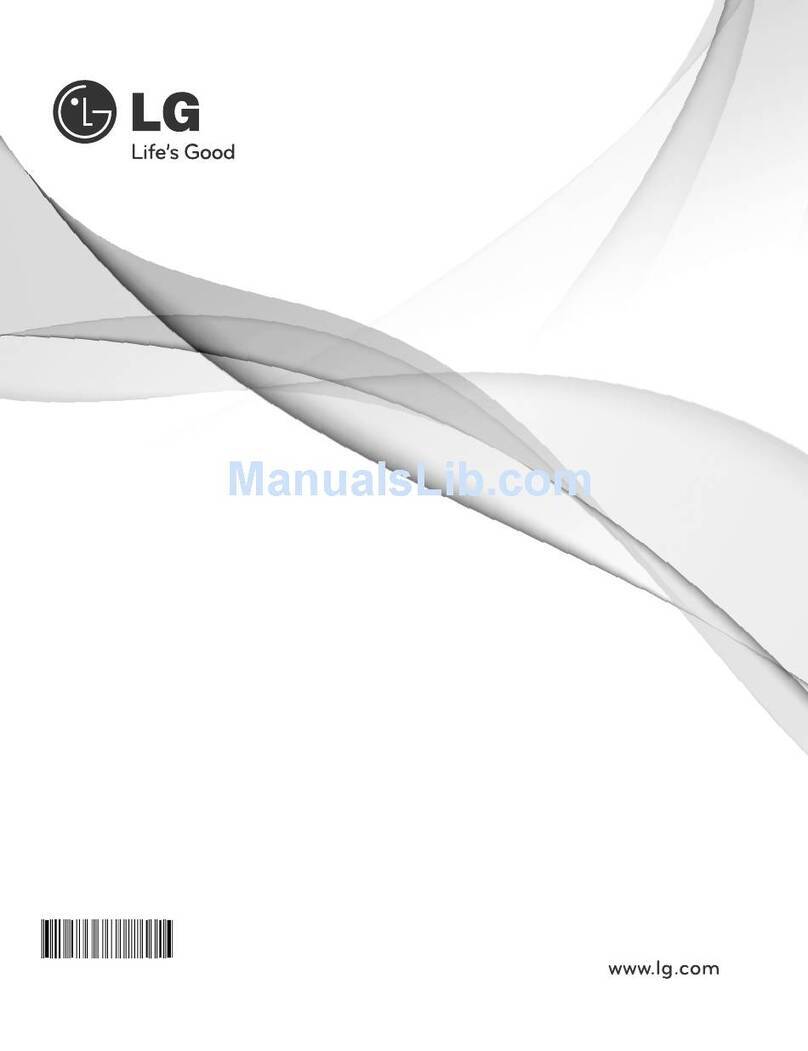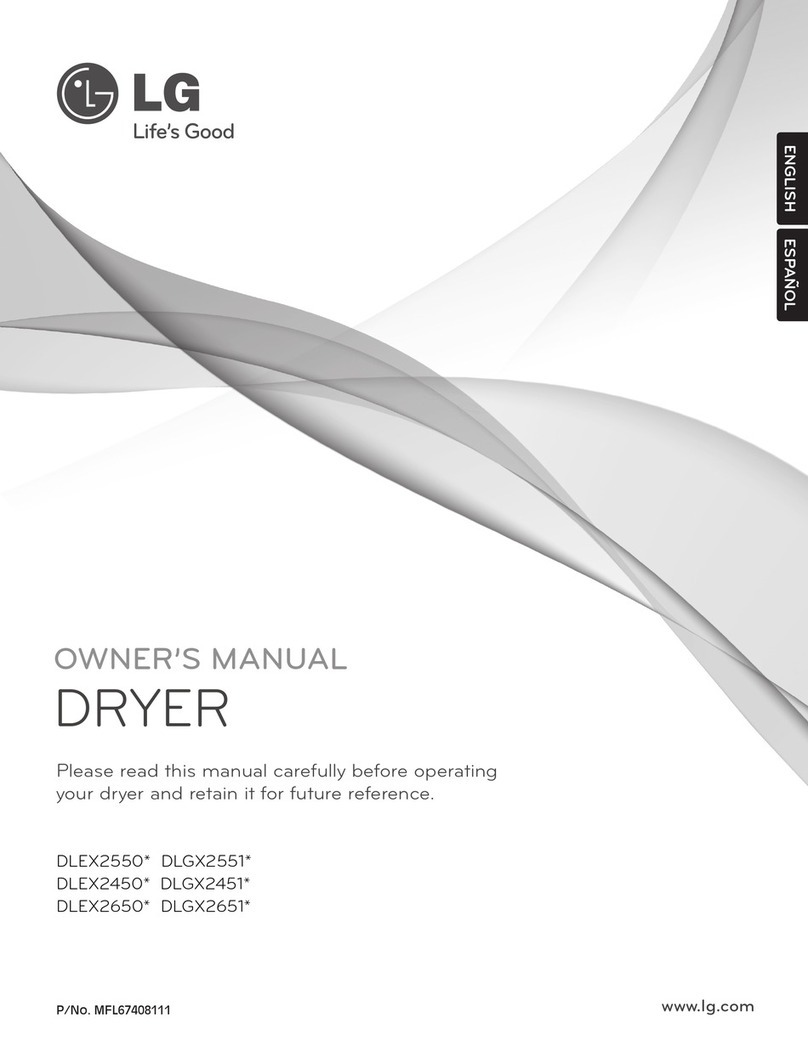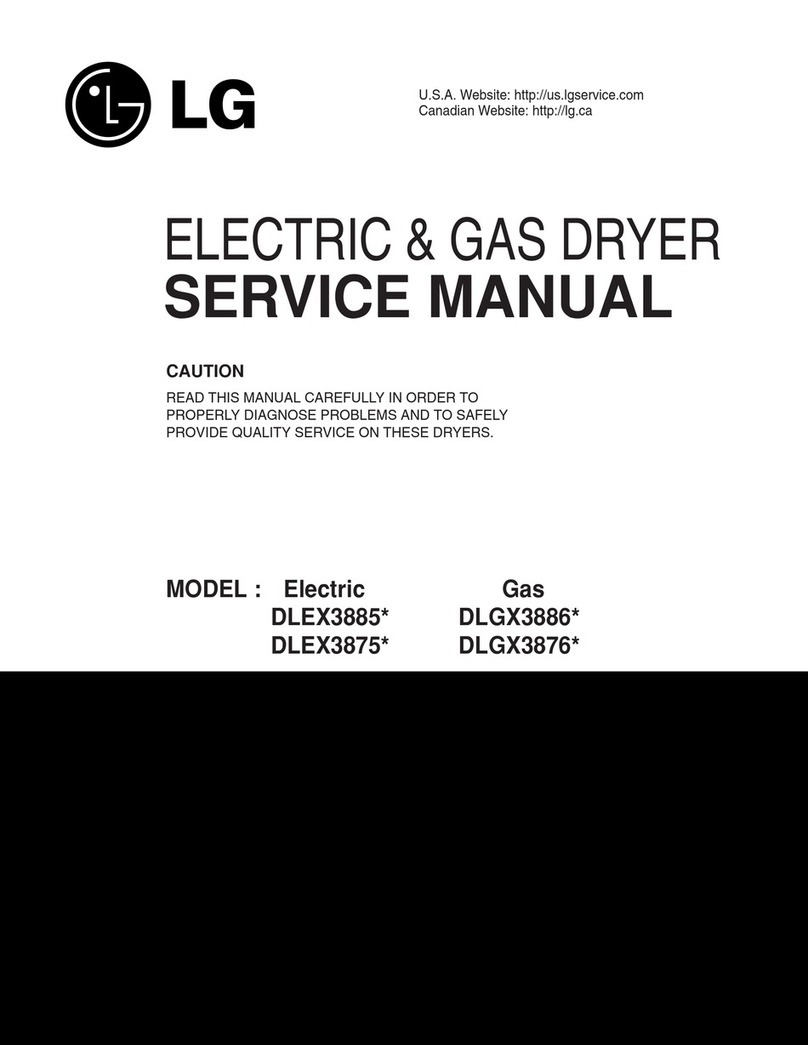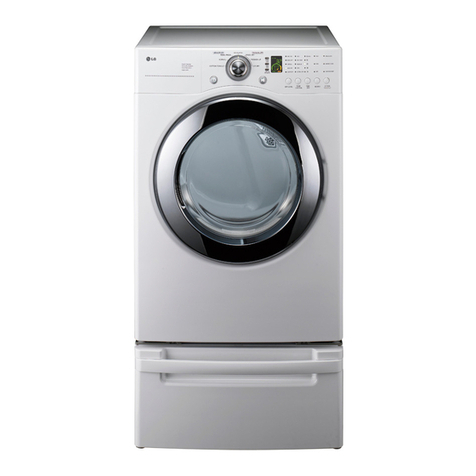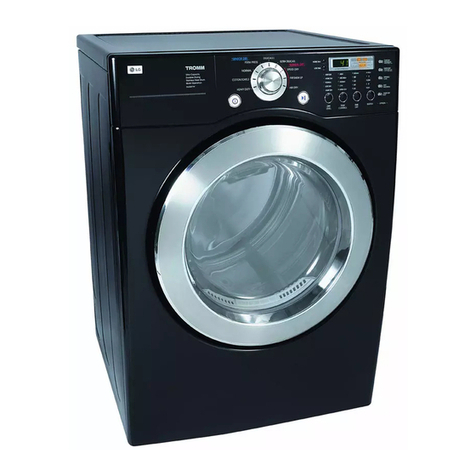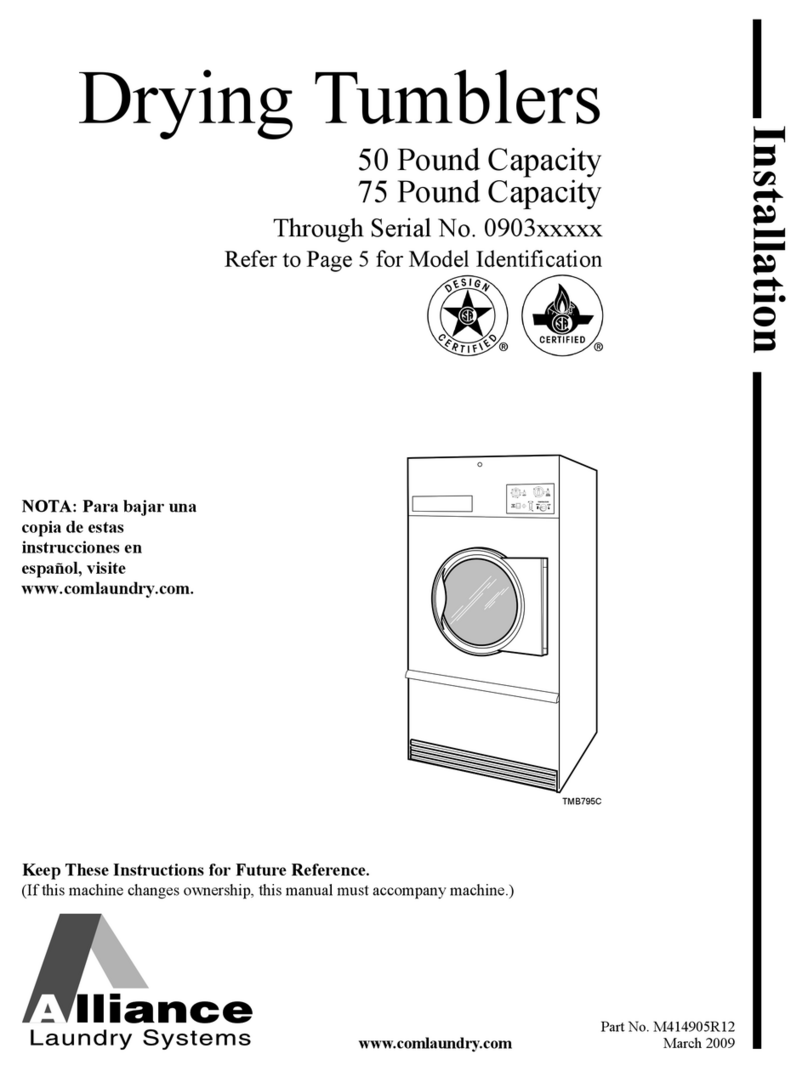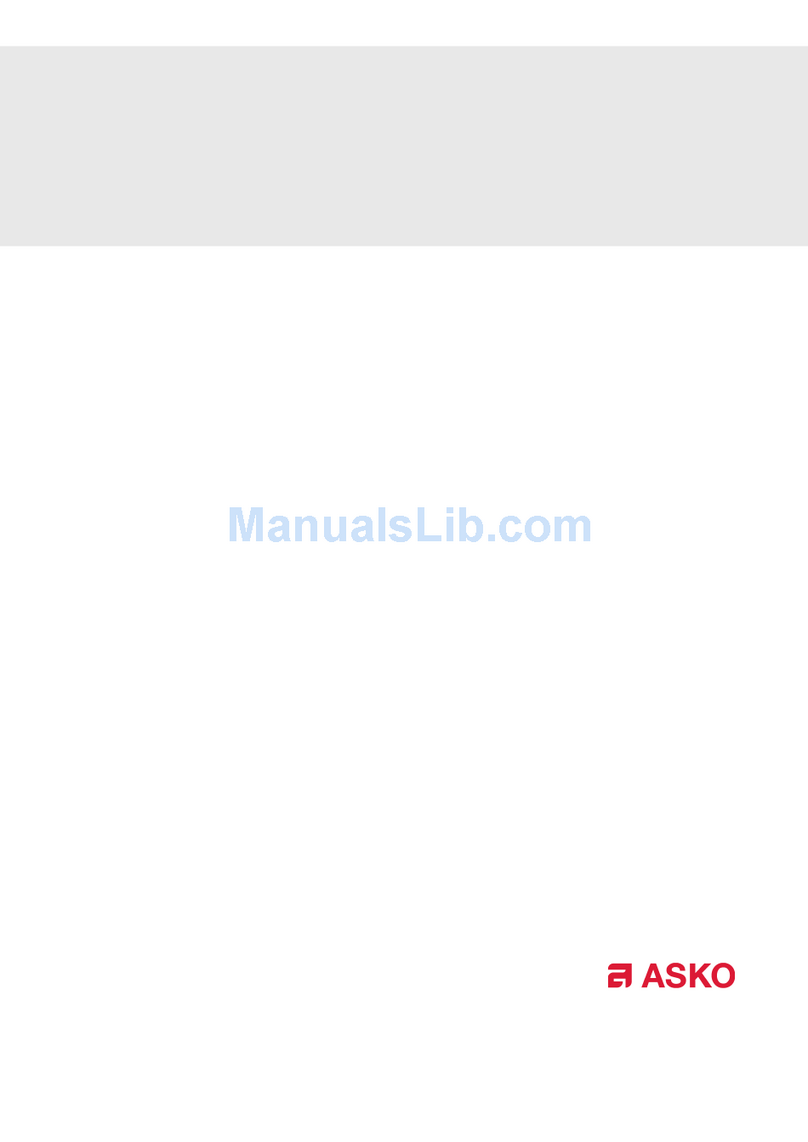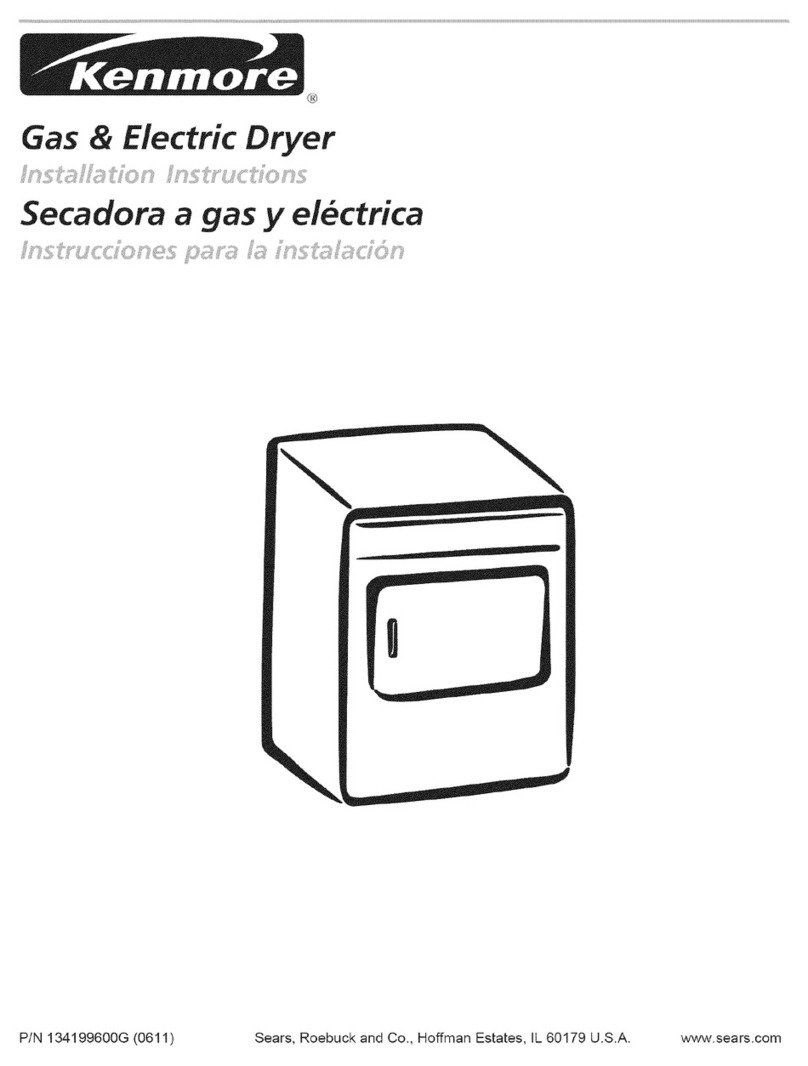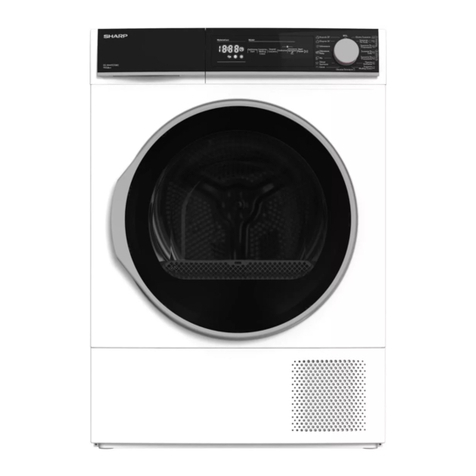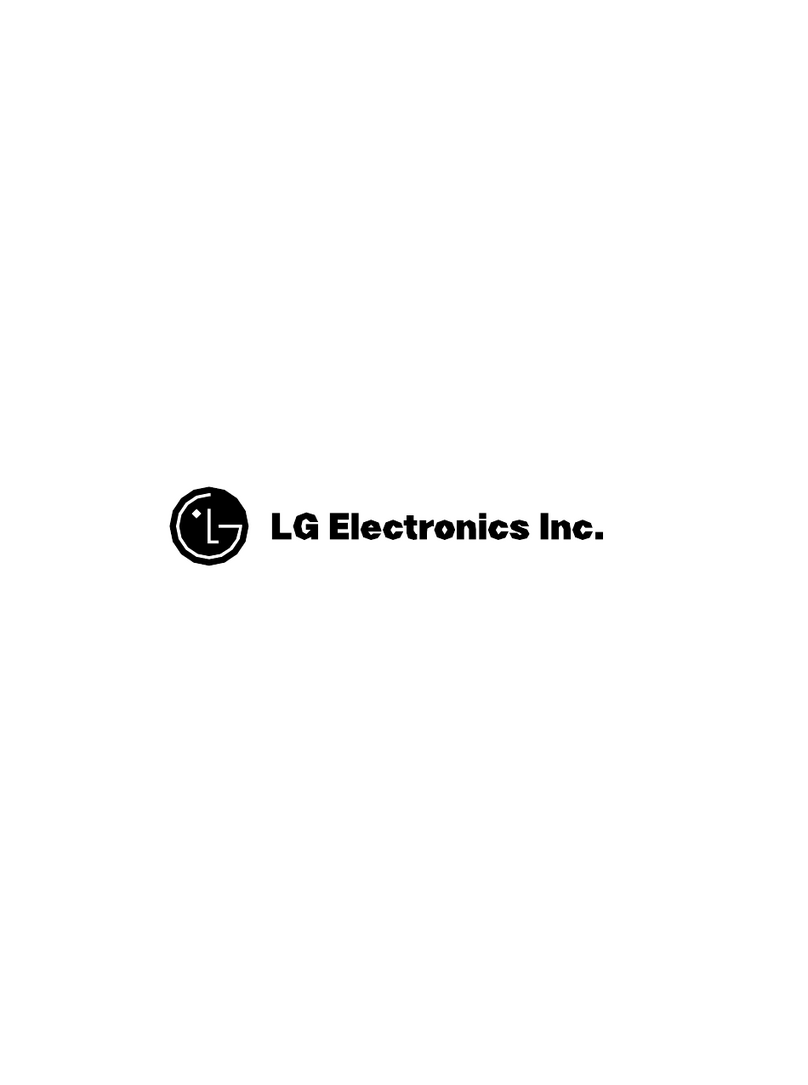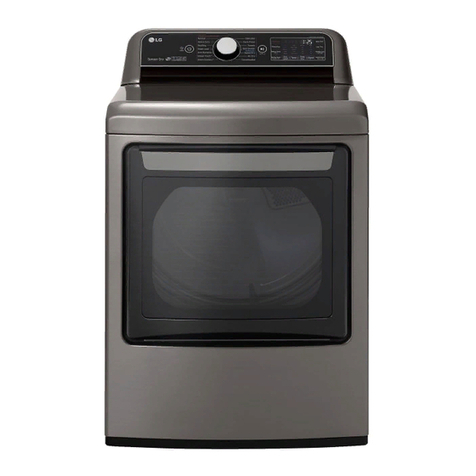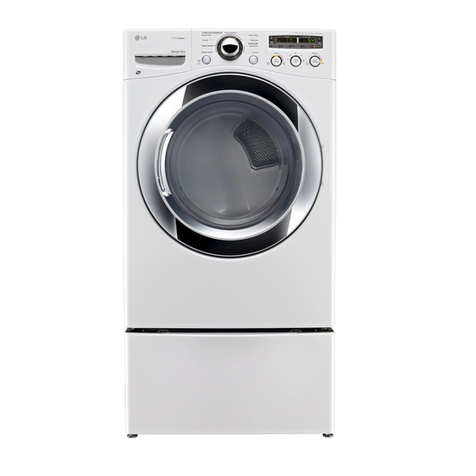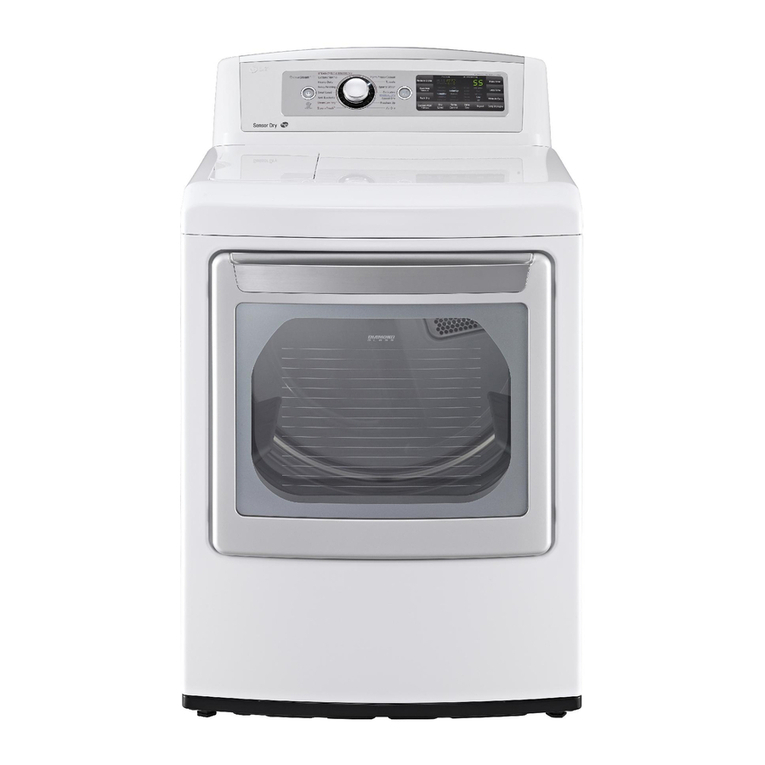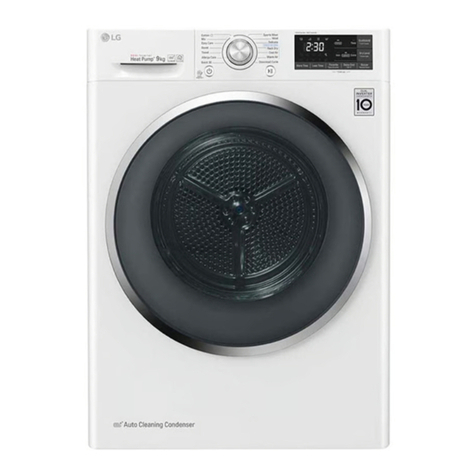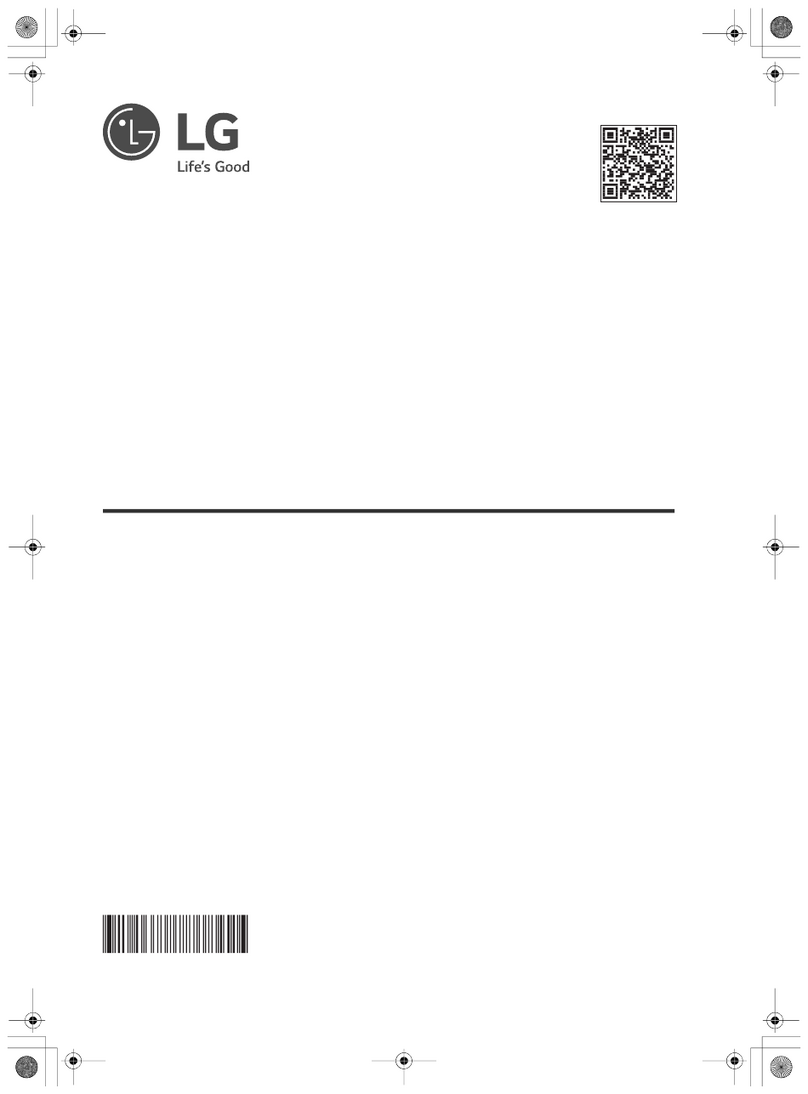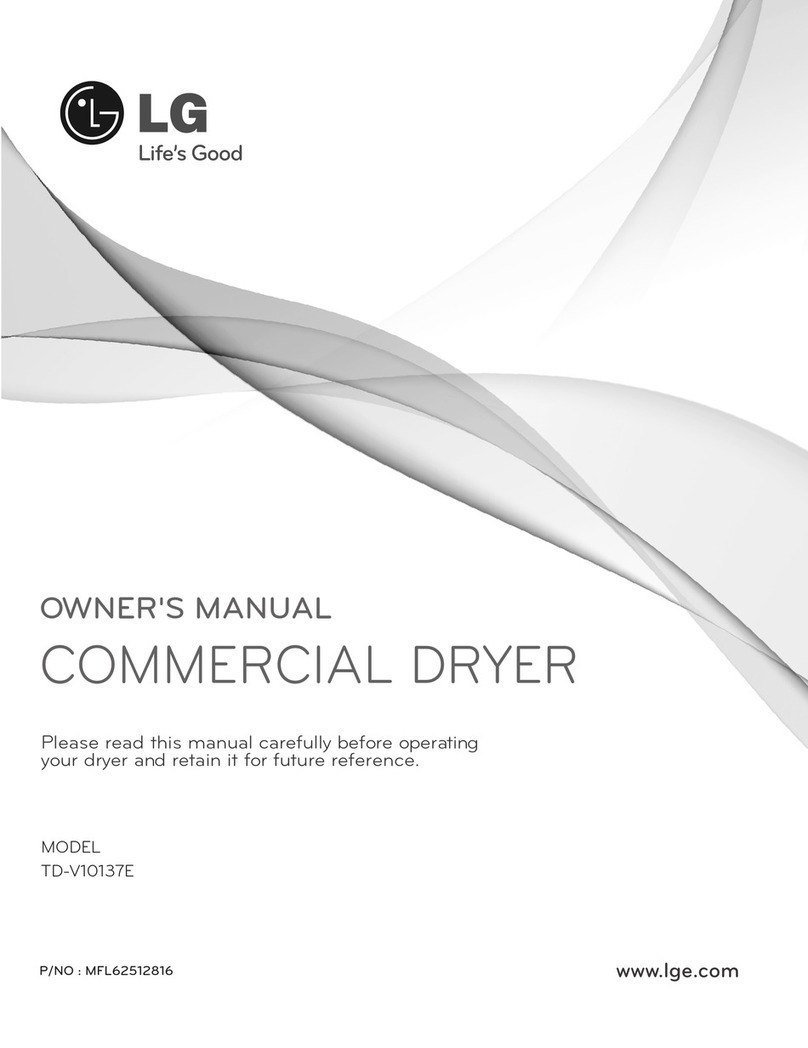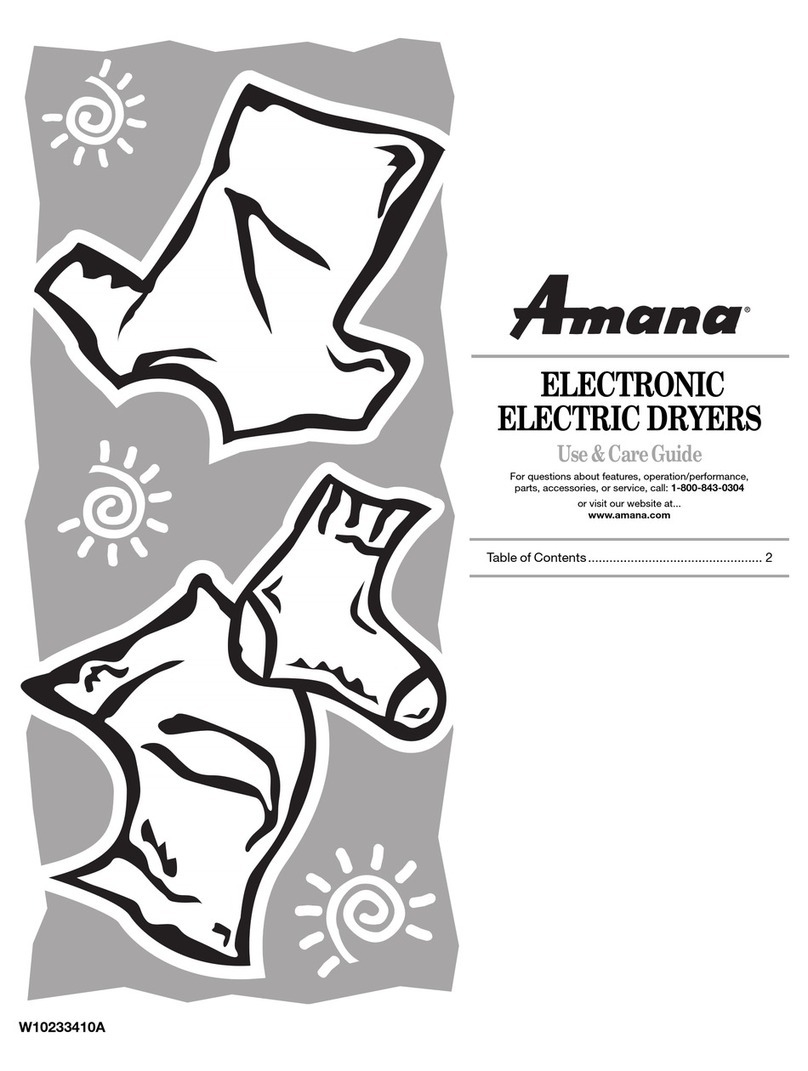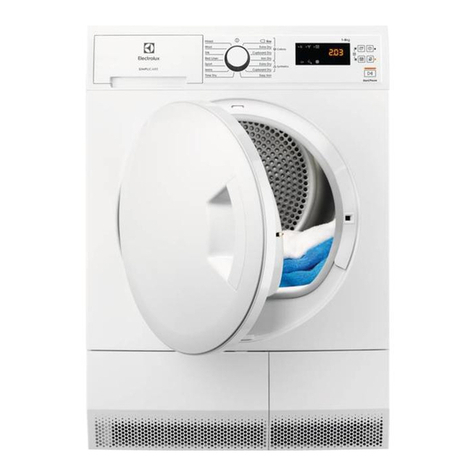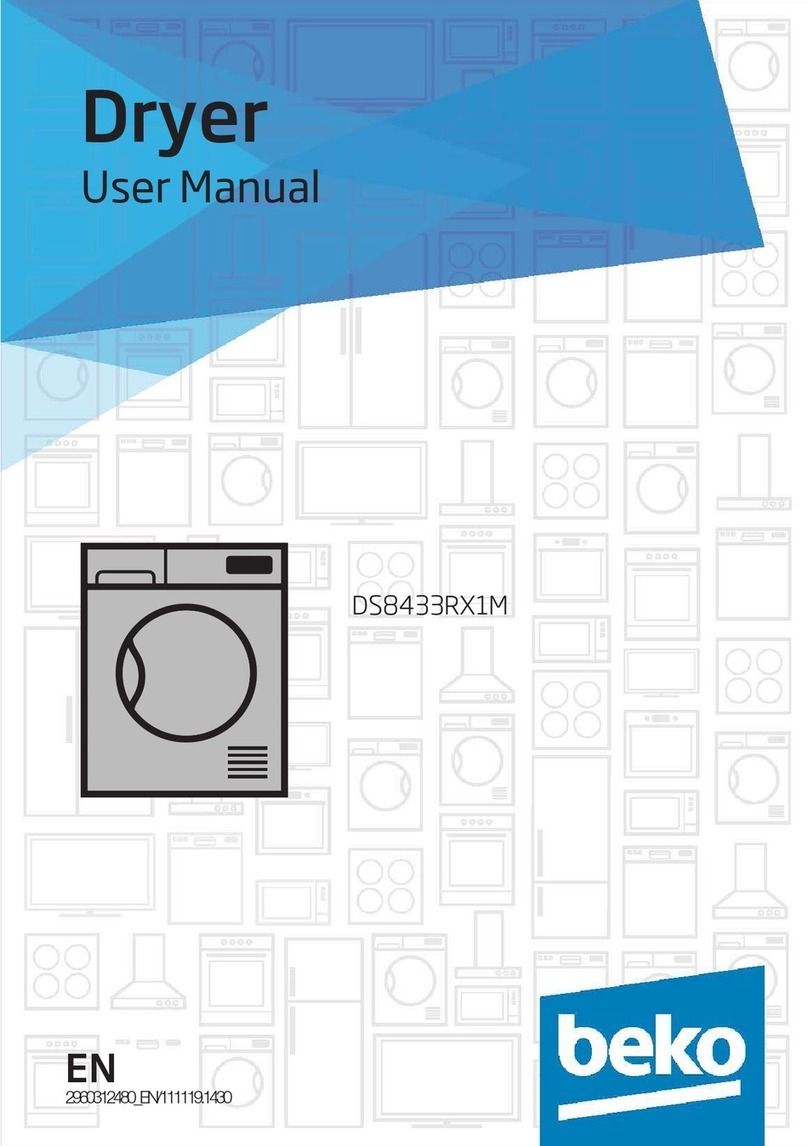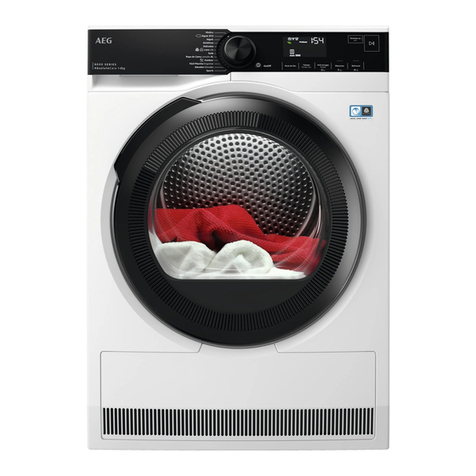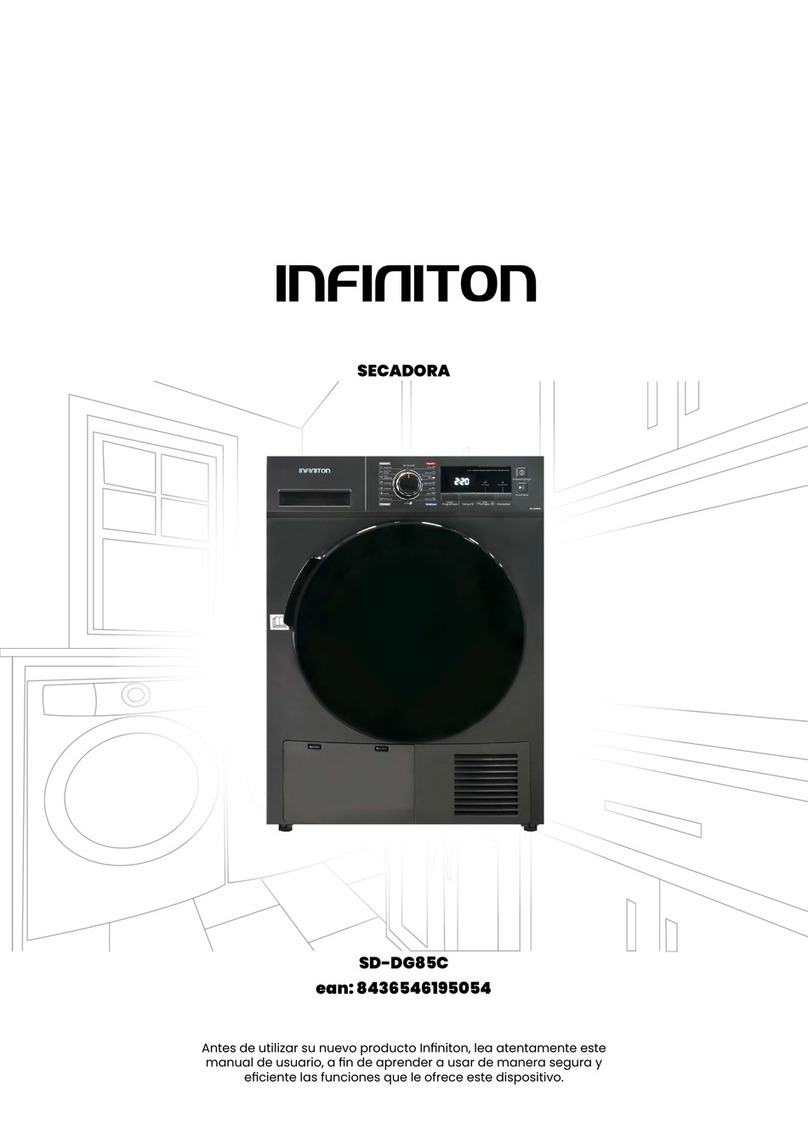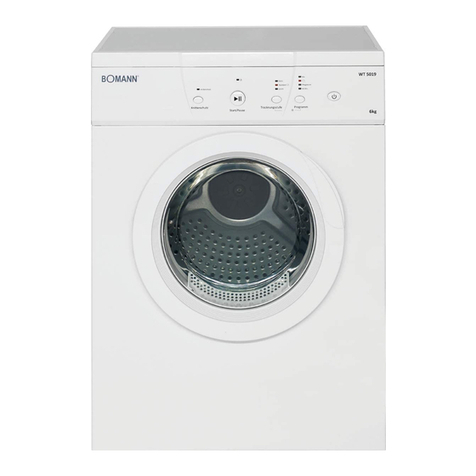4
IMPORTANT WARRANTY AND SAFETY INSTRUCTIONSPart 1
This act requires the governor of California to publish a list of substances known to the state to cause cancer, birth defects,
or other reproductive harm and requires businesses to warn customers of potential exposure to such substances.
Gas appliances can cause minor exposure to four of these substances, namely benzene, carbon monxide, formaldehyde,
and soot, caused primarily by the incomplete combustion of natural gas or LP fuels.
Properly adjusted dryers will minimize incomplete combustion. Exposure to these substances can be minimized further by
properly venting the dryer to the outdoors.
READ ALL INSTRUCTIONS BEFORE USE
CALIFORNIA SAFE DRINKING WATER AND TOXIC ENFORCEMENT ACT
To reduce the risk of fire, electric shock, or injury to persons when using the appliance, follow basic
precautions, including the following:
WARNING
For your safety, the information in this manual must be followed to minimize the risk of fire or
explosion, electric shock, or to prevent property damage, personal injury, or loss of life.
WARNING
• Read all instructions before using the dryer.
• Before use, the dryer must be properly installed as described in
this manual.
• Do not place items exposed to cooking oils in your dryer. Items
contaminated with cooking oils may contribute to a chemical
reaction that could cause a load to catch fire.
Do not dry articles that have been previously cleaned in, washed
in, soaked in, or spotted with gasoline, dry-cleaning solvents, other
flammable or explosive substances as they give off vapors that
could ignite or explode.
• Do not reach into the dryer if the drum is moving.
• Do not repair or replace any part of the dryer or attempt any
servicing unless specifically recommended in this Use and Care
Guide or in published user-repair instructions that you understand
and have the skills to carry out.
• Do not tamper with controls.
• Before the dryer is removed from service or discarded, remove the
door to the drying compartment.
• Do not allow children to play on or in the dryer.
Close supervision of children is necessary when the dryer is used
near children.
• Do not use fabric softeners or products to eliminate static unless
recommended by the manufacturer of the fabric softener or
product.
• Do not use heat to dry articles containing foam rubber or similarly
textured rubber-like materials.
• Keep area around the exhaust opening and adjacent surrounding
areas free from the accumulation of lint, dust, and dirt.
• The interior of the dryer and exhaust vent should be cleaned
periodically by qualified service personnel.
• Do not install or store the dryer where it will be exposed to the
weather.
• Do not reach into the dryer while parts are moving.
• Always check the inside of the dryer for foreign objects
• Clean lint screen before or after each load.
BASIC SAFETY PRECAUTIONS
To reduce the risk of fire, electric shock or injury to persons when using your appliance, follow basic
precautions, including the following :
WARNING
GROUNDING INSTRUCTIONS
This appliance must be grounded. In the event of malfunction
or breakdown, grounding will reduce the risk of electric shock
by providing a path of least resistance for electric current.
This appliance must be equipped with a cord having an
equipment-grounding conductor and a grounding plug. The
plug must be plugged into an appropriate outlet that is
properly installed and grounded in accordance with all local
codes and ordinances.
WARNING -
Improper connection of the equipment- rounding
conductor can result in a risk of electric shock. Check with a
qualified electrician or service person if you are in doubt as to
whether the appliance is properly grounded.
Do not modify the plug provided with the appliance.
If it will not fit the outlet, have a proper outlet installed by a
qualified electrician.
This appliance must be connected to a grounded metal,
permanent wiring system or an equipment-grounding conductor
must be run with the circuit conductors and connected to the
equipment-grounding terminal or lead on the appliance.
SAVE THESE INSTRUCTIONS
